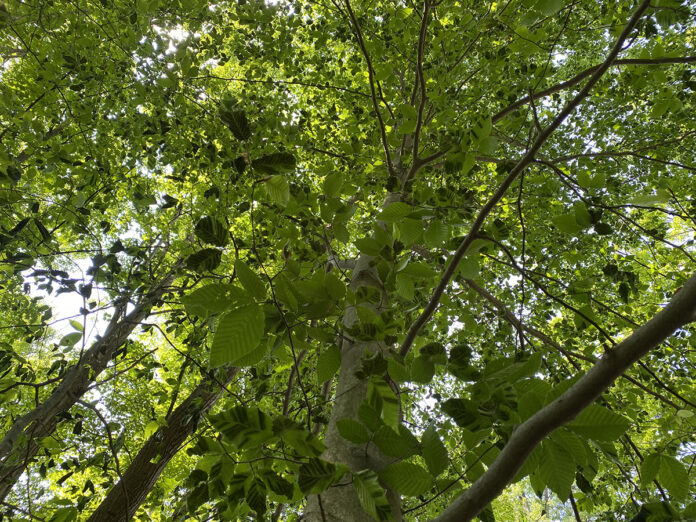Have you ever considered that wooded areas are just big gardens? When thinking of forests in this light, understanding the need for efficient forest management may seem a little more applicable. Trees need sufficient light, space, water and wildlife activity to successfully grow and mature. Sure, forests can do just fine on their own, but sometimes forests can struggle to effectively generate and maintain new growth due to overcrowding or the presence of invasive species.
The Ohio Department of Natural Resources Division of Forestry can provide quality assistance to landowners for their wooded land, provide recommendations and even offer programs.
Along with the Division of Forestry, your local soil and water conservation districts can also aid and point you in the right direction for your timber or wooded lot needs. Whether you have dozens of wooded acres that need a little cleanup or you’re interested in harvesting and selling your timber, chances are you have all the necessary resources right at your fingertips.
Thinning? Improving? Clear-cutting? Before tearing into a lot to harvest timber, your best bet is to contact a forester. Whether that be through a private consulting firm or the Division of Forestry, foresters will share a bit of their expertise to make an educated decision for you and your property. A service forester will also be happy to provide recommendations, with the best interest of maintaining your wooded lots’ longevity in mind, and resources to make the harvest process convenient for you.
Notice of Intent
If you’re thinking about harvesting your timber, consider submitting a voluntary Notice of Intent to your local SWCD. The submission of an NOI simply helps SWCDs be aware of active logging activities and make sure that proper best management practices, BMPs, are in place, if needed, to avoid any negative impacts on the surrounding environment. This can be especially important if a stream or wetland lies near the logging area to avoid any sediment deposition.
Soil erosion and water disruption are two of the main concerns SWCDs have when logging operations occur. SWCDs appreciate working with loggers and private landowners to see that due diligence is provided before, during and after logging operations.
Forestry Pollution Prevention Plan
When submitting an NOI, a Forestry Pollution Prevention Plan, or FP3, for erosion control can also be submitted if desired. An FP3 can assist a logging operation with maintaining compliance, which can be useful if any issues or complaints arise with surrounding landowners. The plan is quite simple to fill out and provides your local SWCD with contact information and a general overview of the logging operation that will be occurring.
The most important information provided with the submission of an FP3 is the description of what BMPs will be used on-site. BMPs for logging sites often include filter strips near streams, water bars, stream crossings, skid trail grade specifications and more to ensure the land is being managed properly. After submission of an FP3, a SWCD can approve the plan or offer suggestions as to what should be used and why.
Also, if any civil action takes place against a logging operation, an FP3 can provide additional help in ensuring that all activities are being conducted in compliance with an SWCD-approved plan which can be less of a headache for those conducting the logging.
Tax breaks
I can lower my property taxes just by having forested acres? No way! Did you know that if you own 10 or more acres of contiguous woodland, you can qualify for two different tax-incentive-based programs?
The ODNR Division of Forestry administers the Ohio Forest Tax Law tax reduction program which offers a 50% tax reduction on managed forested acres. “Managed” forested acres means that if enrolled in the program, landowners agree to manage their forested land for commercial production of timber, following the applicable rules and regulations. Two non-negotiables to stay enrolled in this program include having your property boundaries marked every 100 feet and having an approved Forest Management Plan that you actively abide by.
There is also the Current Agricultural Use Value Program which is administered through the Ohio Department of Taxation. CAUV is for farmlands devoted exclusively to commercial agriculture, which includes timber harvesting, and for farmers who value the land for its current use rather than its potential use. This leads to substantially lower tax bills for working farmers since their land wouldn’t be looked at as a future shopping center or residential subdivision.
To be eligible for this program, one must have 10 or more acres of land exclusively used for commercial agriculture. If you are interested in CAUV but have less than 10 acres devoted strictly to commercial agriculture, you are still eligible to join if the farm produces an average yearly income of at least $2,500.
Resources for you. ODNR Division of Forestry also implements a CallB4UCut program to offer advice to individuals who have an interest in taking down trees on their land. This program emphasizes that timber is indeed a source of income and that how it is harvested can impact what you receive in return, the future value of one’s land and its potential for wildlife habitat before and after harvest.














Sarah, I have a small, wooded area of approximately 1 acre. I would like a Forrester to come and look at my woods in the spring and give me suggestions about the health of the trees. I have had a lot of trees fall and I just want to make sure that my woods is still healthy.
Who should I contact to set up an appointment this spring and have someone come out to my property??
Thank you
Robin, if you’re in Ohio that would be your county soil and water conservation district. In Pennsylvania, it’s just county conservation district. Either way, wherever you are there should be a county office dedicated to helping landowners manage their property.